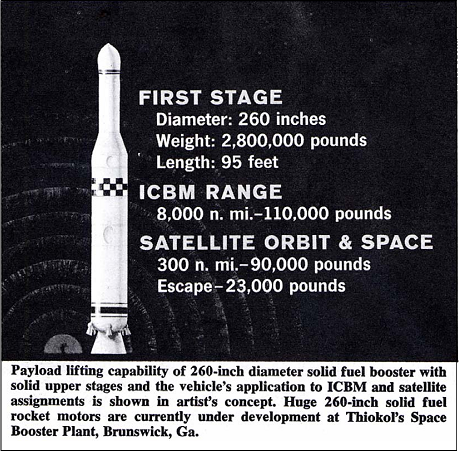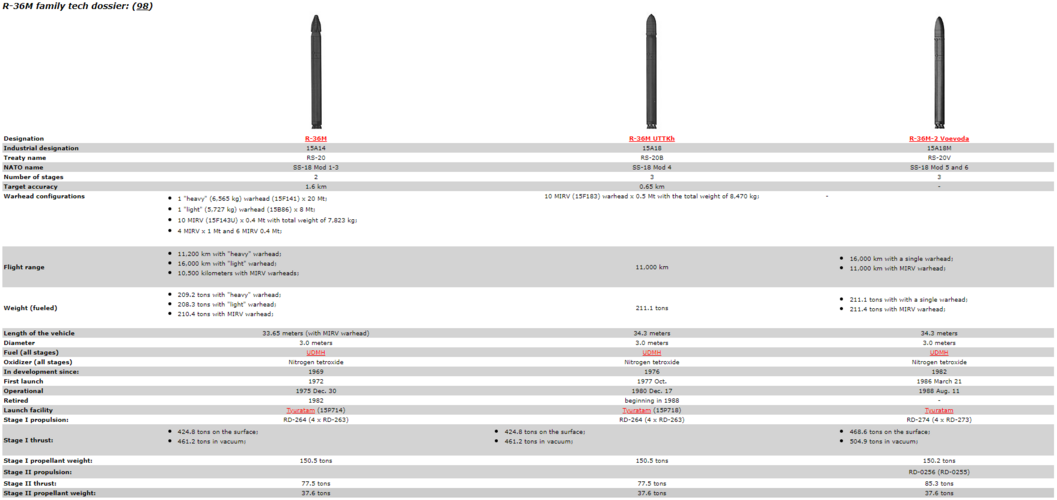Yellow Palace
ACCESS: Top Secret
- Joined
- 5 May 2007
- Messages
- 1,146
- Reaction score
- 1,976
Whilst looking for information on studies for 156" solid rockets applied to ICBMs, I came across this presentation on ATK's large motors. Buried in there is the notion of an ICBM using a 260" solid rocket motor for the first stage of an ICBM - no mention of what the second stage is, other than that it's solid. What really stands out is the throw weight of 110,000 pounds to 8,000 miles. 


